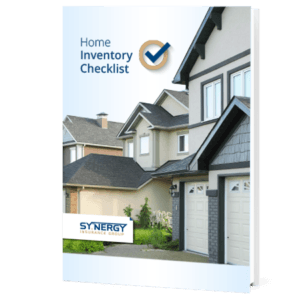How to Create an Inventory of Your Valuables
We never anticipate disaster. A fire, a storm, a flood, or theft—they leave chaos and vulnerability in their wake. Did you know taking proper inventory of your valuables helps make sure your insurance claim is covered? When you lose everything, it’s difficult to go back in your mind and remember what you had, when you bought it, and how much it was worth. This adds stress to an already stressful situation.
However, using a home inventory checklist makes it easy to document your valuables now to give you peace of mind later. Storm season in Florida will be here before you know it. Here’s how to create an inventory of your valuables.
How to Get Started
At Synergy Insurance Group we understand protection. That’s why we created this free Home Inventory Checklist you can quickly download to help you keep a detailed account of your property. Once you’ve finished your room-by-room inventory, we suggest you talk to your insurance agent to decide if you have the right level of coverage based on your home valuables.
But I Don’t Have Anything of Value
Have you had this thought? Think again.
Your grandmother’s ring, your new juicer, your autographed copy of War and Peace – every room has something in it you wouldn’t want to lose. Musical instruments, knives, furniture, rugs, shoes, electronics, bicycles, outdoor equipment…we guarantee your home property items add up to more than you think.
The Nitty Gritty Details

As you document your items, write down brand names and serial numbers, and even consider taking video and verbally recording major items. Store your inventory, receipts, and photographs/video in a fire-proof safe deposit box.
It’s never too early to be prepared, so get started on your own Home Inventory Checklist today! Click the image to download your free copy, and protect your valuables this year.
















